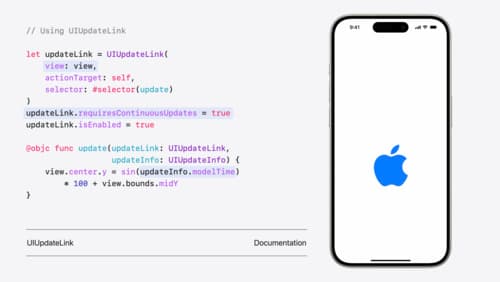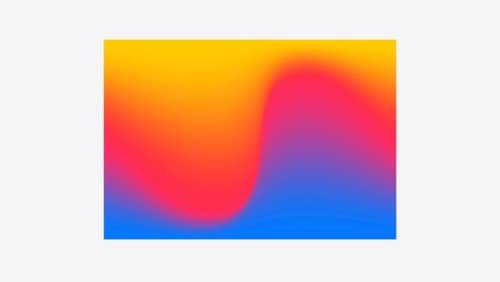should I use swiftui or calayers to animate a lot of elements
Asked on 2024-08-07
1 search
When deciding whether to use SwiftUI or CA layers for animating a lot of elements, there are several considerations to keep in mind based on the content presented at WWDC:
-
Interoperability: SwiftUI now offers enhanced interoperability with UIKit and AppKit, allowing you to use SwiftUI animation types to animate UIKit views. This means you can leverage the full suite of SwiftUI animations, including custom animations, to animate UIKit views (Enhance your UI animations and transitions).
-
Performance: SwiftUI animations do not create CA animations but instead animate the view's layer presentation values directly. This can lead to more efficient animations as it avoids the overhead of creating CA animations (Enhance your UI animations and transitions).
-
Ease of Use: SwiftUI is designed to be more functional and declarative, making it generally better equipped to handle continuously changing states and complex animations with less code (Enhance your UI animations and transitions).
-
Custom Visual Effects: SwiftUI provides powerful graphics APIs, such as shaders, which allow for high-performance rendering directly on the GPU. This can be particularly useful for creating complex visual effects and animations (Create custom visual effects with SwiftUI).
-
New APIs: SwiftUI introduces new APIs like
TextRendererfor custom text animations and other visual effects, which can be very useful for creating dynamic and expressive UI elements (Create custom visual effects with SwiftUI).
Given these points, if you are looking for a modern, efficient, and expressive way to animate a lot of elements, SwiftUI is a strong choice. It offers powerful tools and improved interoperability with UIKit, making it easier to integrate into existing projects. However, if you need very fine-grained control over the animation at the layer level, CA layers might still be necessary for certain use cases.

SwiftUI essentials
Join us on a tour of SwiftUI, Apple’s declarative user interface framework. Learn essential concepts for building apps in SwiftUI, like views, state variables, and layout. Discover the breadth of APIs for building fully featured experiences and crafting unique custom components. Whether you’re brand new to SwiftUI or an experienced developer, you’ll learn how to take advantage of what SwiftUI has to offer when building great apps.

What’s new in UIKit
Explore everything new in UIKit, including tab and document launch experiences, transitions, and text and input changes. We’ll also discuss better-than-ever interoperability between UIKit and SwiftUI animations and gestures, as well as general improvements throughout UIKit.

Create custom visual effects with SwiftUI
Discover how to create stunning visual effects in SwiftUI. Learn to build unique scroll effects, rich color treatments, and custom transitions. We’ll also explore advanced graphic effects using Metal shaders and custom text rendering.
